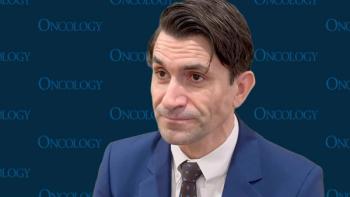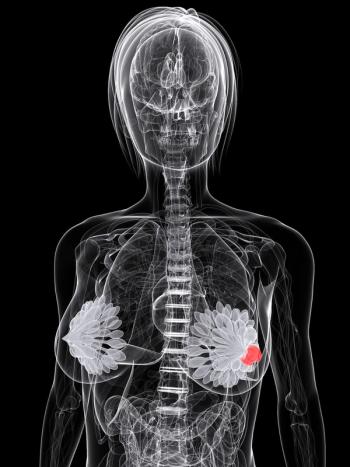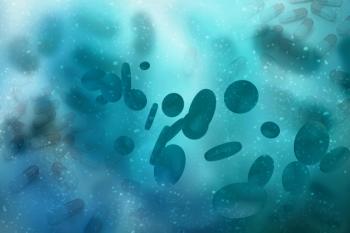
- ONCOLOGY Vol 14 No 3
- Volume 14
- Issue 3
Commentary on Abstract #2802
One logical next step in research on rituximab was to study its activity in previously untreated patients. At the 1999 ASH meeting, Solal-Céligny et al (abstract #2802) presented the French experience with 50 patients who had low-risk follicular NHL, as defined by the following characteristics: absence of B symptoms, no tumor mass > 7 cm, and a normal LDH and serum beta-2-microglobulin. The overall response rate to rituximab was 69%, including 31% complete remissions (CRs) and 10% unconfirmed complete remissions (CRu), as defined by the international response criteria (Cheson et al: J Clin Oncol 17:1244-1253, 1999). Of considerable interest was the fact that over 50% of patients who were positive for the bcl-2 rearrangement (as determined by polymerase chain reaction [PCR] assay) prior to therapy were PCR negative after treatment. A quarter of the patients had recurred at a median of 13 months. Therefore, longer follow-up will be required to determine whether a molecular response will be associated with more durable responses and the potential for prolongation of survival.
One logical next step in research on rituximab was to study its activity in previously untreated patients. At the 1999 ASH meeting, Solal-Céligny et al (abstract #2802) presented the French experience with 50 patients who had low-risk follicular NHL, as defined by the following characteristics: absence of B symptoms, no tumor mass > 7 cm, and a normal LDH and serum beta-2-microglobulin. The overall response rate to rituximab was 69%, including 31% complete remissions (CRs) and 10% unconfirmed complete remissions (CRu), as defined by the international response criteria (Cheson et al: J Clin Oncol 17:1244-1253, 1999). Of considerable interest was the fact that over 50% of patients who were positive for the bcl-2 rearrangement (as determined by polymerase chain reaction [PCR] assay) prior to therapy were PCR negative after treatment. A quarter of the patients had recurred at a median of 13 months. Therefore, longer follow-up will be required to determine whether a molecular response will be associated with more durable responses and the potential for prolongation of survival.
The response rates seen with rituximab when employed as initial treatment should not be taken as an endorsement for the use of the antibody in this setting. The follicular/low-grade NHLs are notorious for responding to a wide variety of treatment options; these include alkylating agents, both alone and combined with anthracyclines, purine analogs, radiation therapy, and biological agents, such as interferon and, now, monoclonal antibodies. Nevertheless, even regimens that have appeared to increase response rates have failed to show a survival benefit. For example, the CR rate with fludarabine has been reported to be almost 40% in several series, with overall responses in 70% of patients, including a study conducted by the French investigators (Solal-Céligny et al: J Clin Oncol 14:514-519, 1996). Unfortunately, a survival benefit has not been suggested.
Comparisons with standard agents are required before rituximab can be considered one of the standard initial treatment options. More importantly, however, if this agent is to exert its greatest impact on patient outcome, it will have to be incorporated into multiagent regimens. Randomized trials are currently exploring the potential benefit of adding rituximab to such regimens as CHOP (cyclophosphamide, doxorubicin HCl, Oncovin, and prednisone) in patients with indolent NHL.
Articles in this issue
almost 26 years ago
FHIT Gene, Smoking, and Cervical Canceralmost 26 years ago
IOM Medical Error Estimates Questioned, But Legislation Consideredalmost 26 years ago
Less Toxic Therapies for Hodgkin’s Disease May Reduce Secondary CancersNewsletter
Stay up to date on recent advances in the multidisciplinary approach to cancer.
















































































